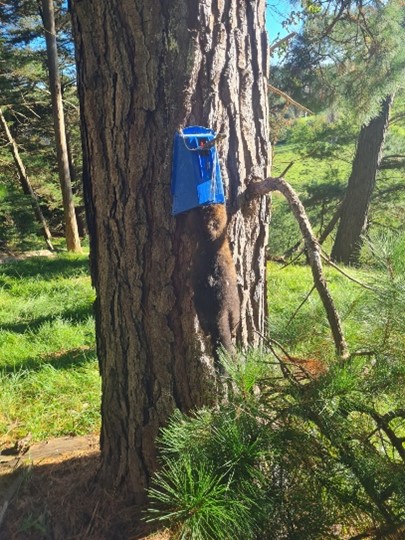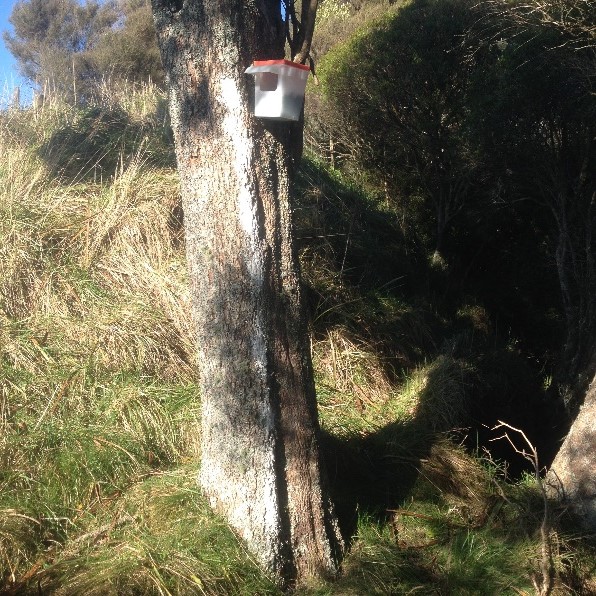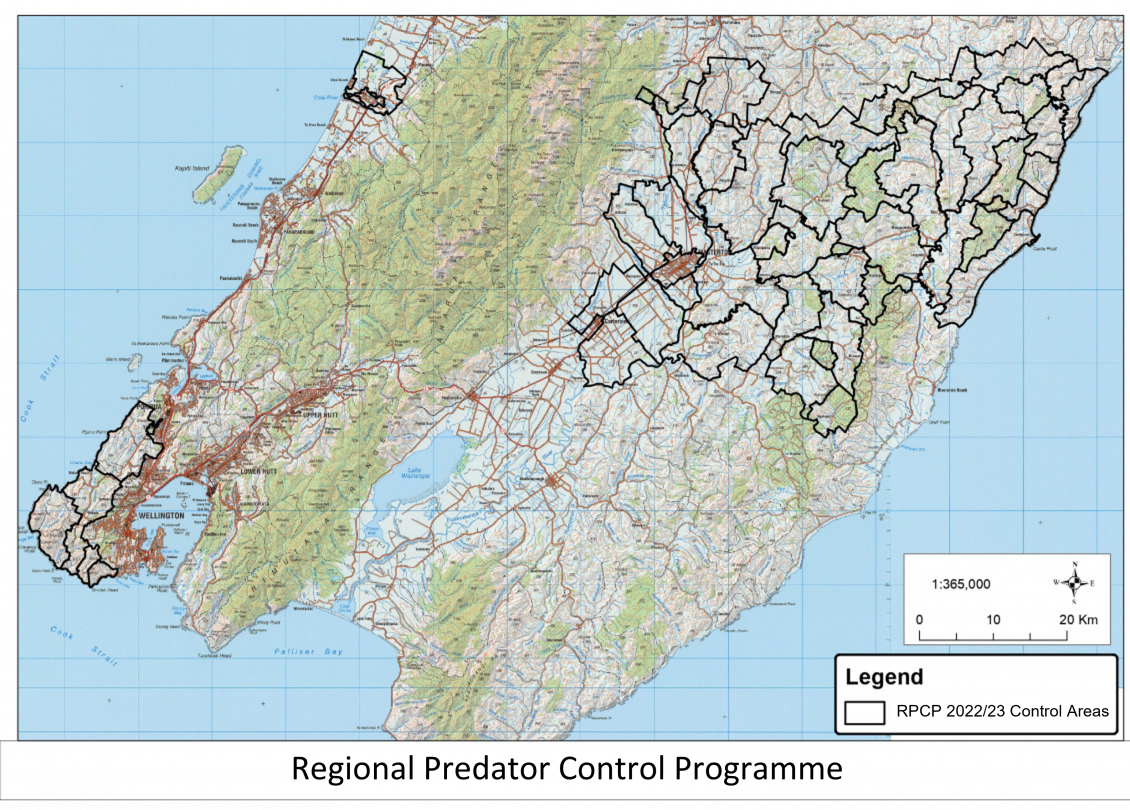What is the RPCP?
The Regional Predator Control Programme (RPCP) is a Greater Wellington Regional Council pest management initiative that aims to control possums and other pest animals that threaten our native biodiversity and economy.
Complementary to the RPCP programme, TBfree NZ contribute to the control of possums within other parts of the Wellington Region, with the aim to eradicate Bovine Tuberculosis (TB) from the population to protect the regions’ livestock.
The RPCP is mainly focused on controlling possum populations, with other pest animals such as mustelids targeted in areas of high ecological value.
This programme used to be called the Regional Possum Predator Control Programme (RPPCP).
Why control pests?
 Possums consume large amounts of native vegetation and eat the eggs and young of native birds. They can also do considerable damage to residential gardens and agricultural crops and can carry Bovine TB.
Possums consume large amounts of native vegetation and eat the eggs and young of native birds. They can also do considerable damage to residential gardens and agricultural crops and can carry Bovine TB.
Possums can cause damage to young pine seedlings, affecting their growth and causing economic loss.
Seedling damage is caused by possums browsing or breaking the terminal shoots, removing needles and cones, bending or breaking lateral branches in the upper portion of the tree, and biting and stripping the bark of young stems to get at the ‘cambial tissue’. Cambial tissue is important for secondary growth of stems and roots.
Low possum numbers from ongoing control, allows native bush and birdlife to flourish. Other benefits include lower pastoral grazing pressure and reduced harm to fruit trees and gardens. Planting projects for soil erosion and riparian management have also seen less damage.
Regular ongoing control reduces the number of possum carcasses and the amount of toxin required to keep possums at low levels. This also allows vegetation and wildlife to recover, with many landowners reporting a considerable increase in native birdlife following possum control.
Possums can bounce back
Greater Wellington monitors possum populations to National Possum Population Monitoring standards, using the trap-catch or waxtag method.
The monitoring protocol is used both to determine the success of an operation, and to indicate when control should be implemented.
Monitoring possum populations allows funding to be directed towards areas with a higher need for control. Where possum numbers remain low, control may only be required every second or third year.
Why should I allow the Programme on my property?
The RPCP is an opportunity to protect your property, if you are within the Greater Wellington target area, and to help biodiversity and native habitat return to the Wellington Region.
If a property remains unprotected, possums will reinvade surrounding properties and reduce the overall success of the operation. This will also mean more regular maintenance control at a greater cost.
What do I need to do?
The RPCP is funded by Greater Wellington rates, and as more areas are declared ‘TB Free’, the RPCP programme will expand.
Greater Wellington staff will contact property owners, seeking permission to undertake pest control using the most efficient methods. Written consent must be given by the property owners before any control will commence.
What can be done to get rid of possums and predators?
Greater Wellington uses a range of toxin and trapping control techniques to control pest animals.
Toxins are typically dispensed from bait stations, which may be left in place permanently. Bait stations are typically serviced numerous times during the control phase.
Maintenance control is initially completed annually to get possum numbers to low levels, then planned on a biennial basis or longer, dependent on the monitoring and programme priorities.
Permanently erecting bait stations saves time and money and reduces the number of times staff need to access a property. Savings here mean funding can then be redirected to control and expanding the programme.
The main toxins used in the RPCP include Brodifacoum, Double Tap (a Diphacinone and Cholecalciferol blend), Cholecalciferol, Cyanide and 1080.
Traps are an important tool for controlling possums. There are a variety of possum traps available, which can either kill the possum or capture them alive. Both ‘leghold’ and kill traps are very effective when used correctly and can be set on or above the ground depending on the location and trap type.



Get in touch
- Phone:
- 0800 496 734
- Email:
- info@gw.govt.nz
